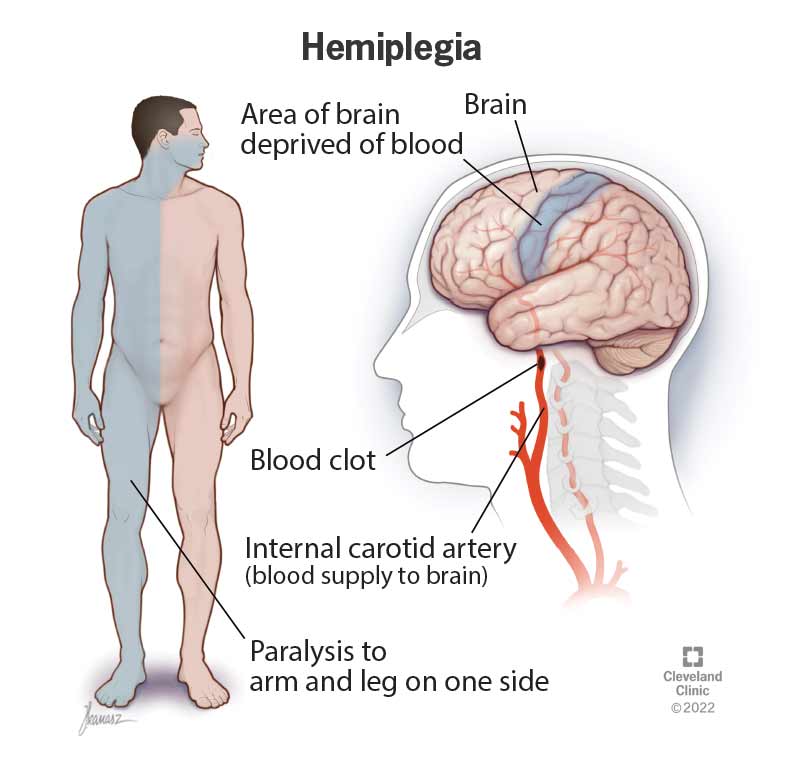Hemiplegia – Causes, Symptoms & Treatment
Hemiplegia is a condition characterized by paralysis of one side of the body. It typically results from damage to the part of the brain that controls movement, often due to a stroke, traumatic brain injury, brain tumor, or certain neurological conditions.
🔍 Key Points about Hemiplegia:
Causes:
• Stroke (most common)
• Traumatic brain injury
• Brain tumors
• Cerebral palsy (in children, often congenital hemiplegia)
• Multiple sclerosis or other demyelinating diseases
• Infections (e.g., encephalitis)
• Migraines (rarely, in a form called hemiplegic migraine)
Pathophysiology:
• The motor cortex in one hemisphere of the brain controls voluntary muscle movement on the opposite side of the body.
• Damage to the right hemisphere causes left-sided hemiplegia, and vice versa.
Symptoms:
• Paralysis or severe weakness on one side
• Loss of motor control or coordination
• Difficulty walking or using one arm/leg
• Muscle stiffness (spasticity)
• Possible facial drooping on one side
• Speech or cognitive impairments (depending on brain region affected)
Diagnosis:
• Neurological exam
• Imaging: MRI or CT scan of the brain
• Blood tests, lumbar puncture (if infection suspected)
Treatment:
• Immediate medical care (especially in stroke)
• Physical therapy: improve mobility, strength, and coordination
• Occupational therapy: relearn daily activities
• Speech therapy (if needed)
• Medications: to reduce spasticity (e.g., baclofen )
• Surgery: in some cases (e.g., tendon release.
Prognosis:
• Varies widely depending on cause, severity, and speed of treatment
• Early rehabilitation improves outcomes significantly
• Some people recover fully; others may have long-term disability.

